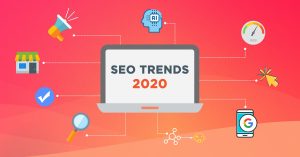People know about data analytics and what they can do, but don’t know many examples of how data analytics has been applied successfully. And not just simple, basic Google Analytics, but programmes of activity and technology that is meant to go deeper, and drive business decisions.
Businesses spend a lot of money trying to determine what data is relevant in a sea of available data. They need help to pin down attribution, that elusive data that identifies sets of user actions that contribute to a desired outcome, like them purchasing something.
Reasons Why Data Analytics Don’t Always Work
The technology available is not sophisticated enough, and while it may be able to collect data and measure things, it is not good at analysing the information it has.
Humans can analyze data, but they have human failings, like wanting to stick to what they specialize in, or not wanting to change the way they work.
Businesses are trying to change and keep up, attempting to make data analytics more customer centric instead of system or channel centric.
Here are three upcoming trends in 2020 that are making data analytics more customer centric:
CDP and DMP Integration
Customer data platforms (CDP) and data management platforms (DMP) are both used to collate customer data individually, but when you combine them, you get a more accurate picture of your customer.
Marketers use DMPs to merge datasets that originated from various first-, second-and third-party channels that help them target customers in ad networks. This means that a variety of marketing channels will provide an experience that is recognisable and consistent for the customers.
CDPs combine the first-party customer data from customer relationship management technology (CRMs), websites, email marketing, ads and point of sale systems so that a more complete profile of a customer is created. Those profiles can be broken down to better facilitate targeted marketing campaigns.
Incredibly, there is currently no system that integrates CDP and DMP. If they were combined, customer profiles would be more comprehensive, so marketers would know where to put their focus.
AI Improvements to Marketing
Artificial intelligence (AI) can automate cumbersome data processes, perform tedious tasks and respond to input from users by providing insight into a course of action. AI takes repetitive tasks away from humans, and saves the company time and money.
An example of how AI can improve a customer’s experience are chatbots. Algorithms are making chatbots more precise and conversational in tone.
AI can personalize marketing by looking at a customer’s history of what they liked and viewed, and provide personalized product recommendations.
Improved Attribution Due to CDP, DMP and AI
The kind of data analytics possible with CDP, DMP and AI will allow marketers to evaluate their strategies better, and lead to more successful marketing attribution, by providing context and making marketing decisions surrounding social engagement, digital campaigns, brand engagement and website optimisation easier.
Coming trends will reflect the importance of how data is collected, stored and analyzed, and the actions taken, because more will be known about customer behavior.



